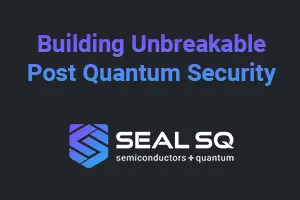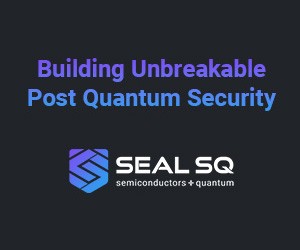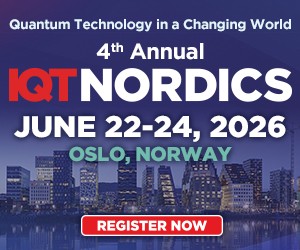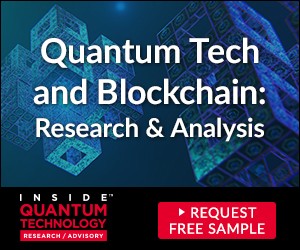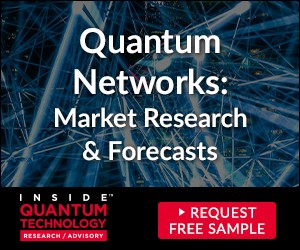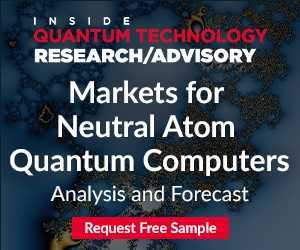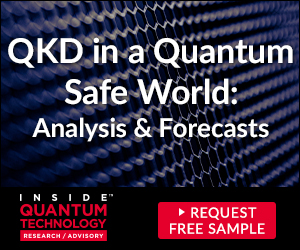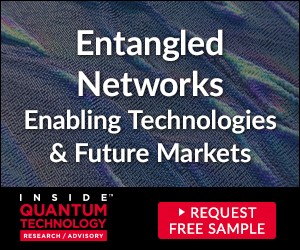
October 13, 2025
The Next Frontier of Intelligence
AI Innovation + Quantum Computing = Frontier Tech
Nexus Ventures, a gold sponsor of the upcoming Q+AI on October 19-21, is investing in the next frontier, supporting “breakthrough companies operating at the intersection of artificial intelligence and quantum computing.” The team applies “analytical rigor,” which sure is prudent before investing in quantum.
This week’s premium content:
- Phasecraft’s Mondrian
- IonQ’s Inside Sales
- Quandela’s gym is open.
- Infleqtion’s Recycled Press Release
- Sell! Sell! Sell!
In this edition:
- Why on Earth should you attend Qblox’s webinar?
- Who let a rabbit through CERN’s security?
- A Billionaire Visionary Ruling the World of Quantum Communications
- QUANTUM + AI FINAL KEYNOTE LINEUP
- EARLY BIRD SAVINGS AVAILABLE FOR QUANTUM + AI UNTIL 9 OCTOBER
- Alice & Bob Matching Family T-shirts at the Mall
- 5 Nobel-worthy scientific advances that haven’t won the prize
- IQM’s Unicorn-Smelling Dragon
- That’s not what it looks like.
- Survey: Do you out earn a multi-billion-dollar company?
- QuEra’s Clarinet Analogy
- Now I know even less.
- Q-CTRL’s Black Opal’s “Ask AI” is in beta.
- Zapata AI Job Seekers… only 1 left on this list!
Why on Earth should you attend Qblox’s webinar?
It’s hilarious that Qblox feels the need to justify why you should attend “Quantum Foundations to Quantum Futures.” Um… hello… Prof. Peter Shor is the guest.
Who let a rabbit through CERN’s security?
If you’ve never witnessed a rabbit run through the LHC tunnel at CERN, you’re in for a treat. Apparently, the rabbit has some place to be on time.
A Billionaire Visionary Ruling the World of Quantum Communications
This is a trailer for Forever Man, a game or animated show or something about Forever Man, a hero or superhero or something. What’s interesting is that the protagonist’s alter ego has apparently made his fortune in quantum communications. This link might require a Twitter account.
QUANTUM + AI FINAL KEYNOTE LINEUP
Q+AI begins on 19 October. Here is the final all-star lineup of keynoters: Carlos Moreira (SEALSQ); Ismael Faro (IBM QUANTUM SERVICES); Subodh Kulkarni (RIGETTI); Andrew McLaughlin (SANDBOXAG); Steve Yalovitser (AMAZON WEB SERVICES); and Marco Pistoia (IONQ). See all 82 speakers and registration information at www.iqtevent.com.
EARLY BIRD SAVINGS AVAILABLE FOR QUANTUM + AI UNTIL 9 OCTOBER
Quantum + AI arrives in less than two weeks, but there is still an opportunity to save registration costs for last minute attendees. Registration information and the complete schedule can be found at www.iqtevent.com.
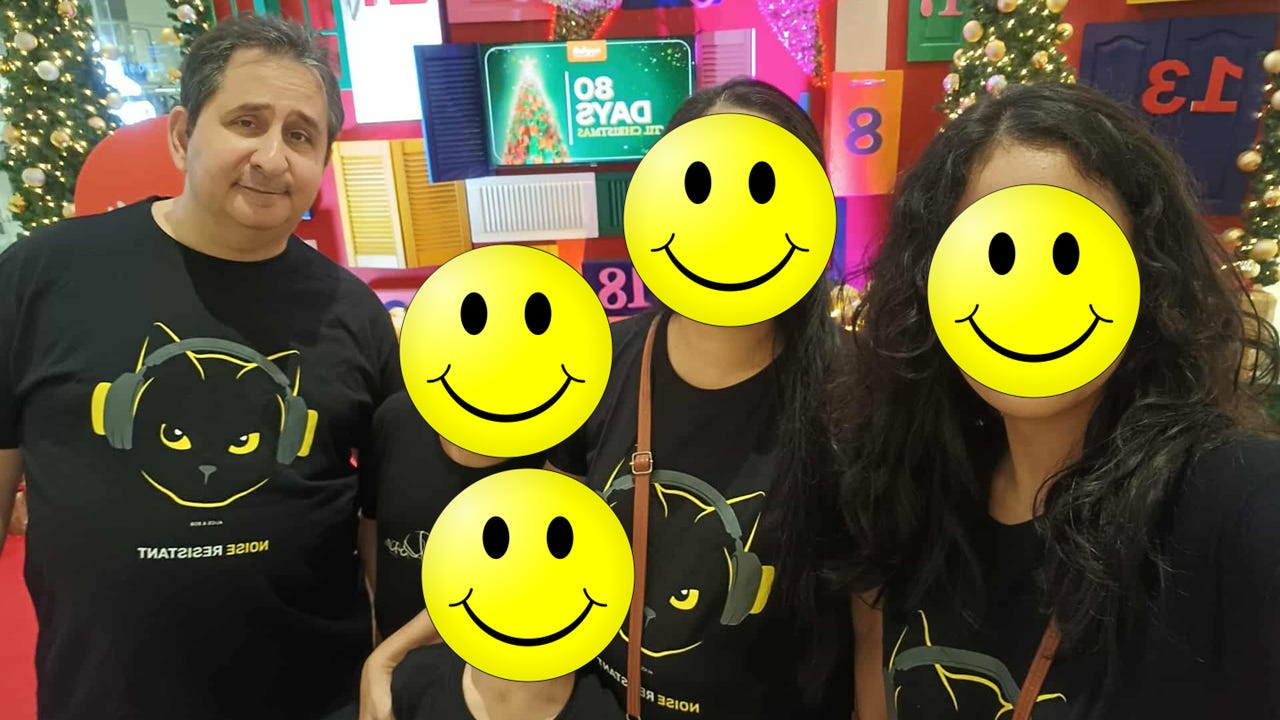
Alice & Bob Matching Family T-shirts at the Mall
The family that quantums together (or not) stays together (or not). Appropriately, my ground state includes an active noise-cancelling headset, quite similar to the cat’s.
5 Nobel-worthy scientific advances that haven’t won the prize
Katie Hunt of CNN Science lists “Quantum computing pioneers,” specifically the research of physicists David P. DiVincenzo of RWTH Aachen University and Daniel Loss of the University of Basel. Interestingly, the 2025 prize does have a quantum computing theme, albeit with different recipients.

IQM’s Unicorn-Smelling Dragon
You may have seen announcements about IQM’s latest funding round, but you may not have seen the implications of it.
That’s not what it looks like.
I’ve seen this before with Microsoft. An article talked about neutral atom and ion trap quantum computers but showed a superconducting system as its featured image. Now Harvard is talking about atoms and is also showing a superconducting system instead. This link might require a Twitter account.
Survey: Do you out earn a multi-billion-dollar company?
While working on one of this week’s premium posts, I noticed that Quantum Computing Inc. has a market cap of $4.11B despite 12-month revenue of only $263,000. I’m curious how many individuals out earn a multi-billion-dollar company. This survey link might require a LinkedIn account.
QuEra’s Clarinet Analogy
Kudos to Yuval Boger and QuEra for maintaining their output of novel analogies. Yuval is a musician, so I’m speculating that his fingerprints are even more on this one than on previous ones, even though as Chief Commercial Officer his fingerprints are presumably on all of them. This link might require a LinkedIn account.
Now I know even less.
When your explanation of quantum tunnelling epically fails, this is an epic response to it. This link might require a Twitter account.
Q-CTRL’s Black Opal’s “Ask AI” is in beta.
Black Opal is Q-CTRL’s education platform, and I’ve written about it at length. The company is now beta testing an “Ask AI” feature for it, and, of course, I’ve already banged away at it. As I type this, there’s not enough time before publication to write up a proper analysis, so for now I’ll just say that Q-CTRL never puts out crap. Ever.
Zapata AI Job Seekers… only 1 left on this list!
If you were laid off by Zapata AI and would like a free listing in this newsletter, please reach out and let me know. I’ll maintain a list in The Quantum Dragon until everyone on the list has been gainfully employed elsewhere or is otherwise no longer actively job seeking. I might extend this offer to all job seekers, but I’ll start with these layoffs.
- Shawn Gibford Industrial PHDc: Quantum Applications in the Life Sciences
Filed under: quantum computing, AI, quantum technologies, quantum communications, deep tech, science humor
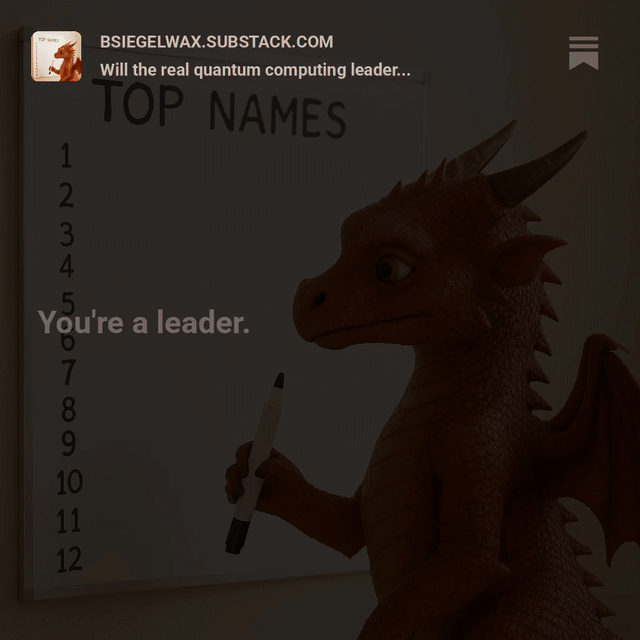
October 9, 2025
AI Meets Quantum: Building Unbreakable Post-Quantum Security
THOUGHT LEADERSHIP ARTICLE
AI Meets Quantum: Building Unbreakable Post-Quantum Security
By Carlos Moreira, CEO of SEALSQ
As we edge closer to a new era where artificial...
October 6, 2025
Quantum’s Best Actress in a Leading Role
MIT Quantum Security Theorist and Pioneer of qRAM and Quantum Algorithms, Dr. Michele Reilly, was recently added as a speaker at Q+AI, which is rapidly approaching on October...
September 29, 2025
How to Build Quantum Networks
Qunnect is building pink hardware to transform telecommunications infrastructure into scalable quantum networks. The modular units need no extreme cooling or vacuum, are low loss...
September 22, 2025
Q+AI+Coffee
With a focus on sustainability, VTT isn’t just advancing the utilization and commercialization of research and technology in commerce and society; it’s also sponsoring...
Latest Reports
Subscribe to Our Email Newsletter
Stay up-to-date on all the latest news from the Quantum Technology industry and receive information and offers from third party vendors.
-
Forthcoming Events
-
Sponsorship/Exhibiting/Speaking Opportunities:
info@3drholdings.com










